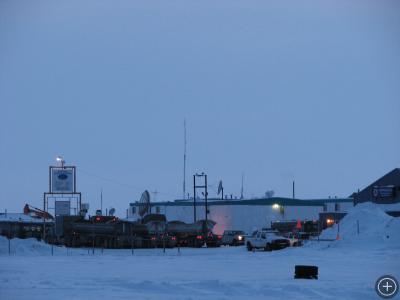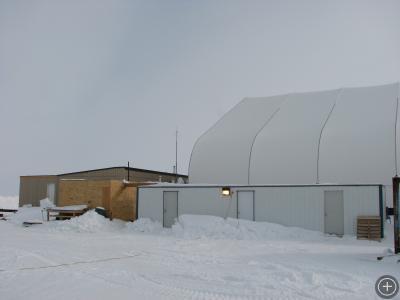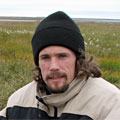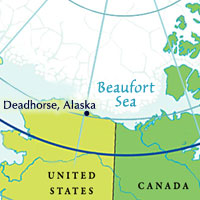Racing to Prepare
DEADHORSE, ALASKA– Deadhorse is surprisingly accessible, but it is definitely in a wildly remote place; yesterday I woke to sunny skies and a temperature of -17 degrees (Fahrenheit). Spring warmth is coming – three weeks ago it was 30 below – but it is still winter here in the Arctic. Snowdrifts are quite deep and it is still bitingly cold. A little over a year ago I was doing field work in Grand Teton National Park, Wyoming, and I spent several days working in temperatures down to -32 but that was without wind. The wind up here makes it particularly cold and I put on extra layers just to walk to the lab in the morning.
The fact that the Arctic is so cold is one of the reasons we are studying polar bears – they are superbly adapted to cold temperatures, but how do they fare in the summer, when temperatures can reach over 50 degrees (unbearably warm for a polar bear)? Summer also means lots of sunshine – on the northern coast of Alaska the sun does not set for about 2 months in the middle of summer. Already, in mid-April, days are quite long.

I took this photo of Deadhorse last night at about 1045pm, as the sun was finally setting and twilight remained. The view is from the front door of our lab.
For lab space, we have rented a large trailer from a charter air service company (Bald Mountain). We are also renting several bedrooms in their living space. The setup is convenient for our research – we can wake up next door to our lab, as well as load up our helicopters for captures in front of the lab.

Our lab space is in the white trailer with several doors. Behind is the large hangar that houses the charter air service company.
I have been up here for several days already, unpacking and organizing our bottomless piles of gear. My two advisors and a technician are set to join me shortly, and we will begin our capture work. However, plans are changing. The United States Geological Survey (USGS), with whom we collaborate for capture work, is already in the midst of their capture work based out of a tiny town about 120 miles to the east, called Kaktovik. One of their crew needs to leave several days early and they need me for an extra pair of hands for a couple days. I had already planned to fly to Kaktovik for evening, to participate in a community meeting about polar bear research – I will stay an extra day to help out.
Simultaneously, one of my advisors and the technician will not make it up here on their scheduled flight; a blizzard in the central Rocky Mountains has closed almost all the roads out of Laramie, Wyoming, and flights out of Denver are canceled. The already-rapid pace of preparations has picked up to accommodate these changes.












Wonderful adventure with delightful descriptions; would make an outstanding book.